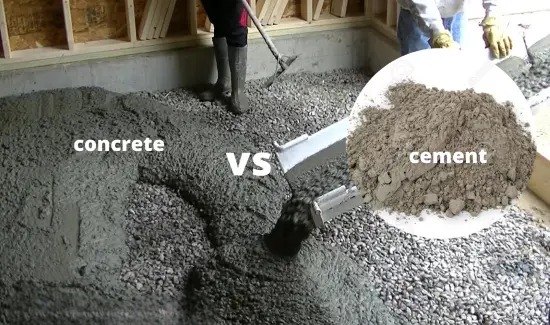If you’ve ever found yourself confused about the distinction between concrete and cement, you’re not alone. These two terms are often used interchangeably, leading to misconceptions about their roles in construction and everyday life. Let’s unravel the mystery and clarify the difference between concrete and cement.
Cement: The Unsung Hero
Cement is the less-celebrated sibling in this dynamic duo, yet it plays a pivotal role in the world of construction. It’s essentially the glue that binds other materials together. Cement is created through a precise manufacturing process that involves heating limestone, clay, and other minerals in a kiln. The result is a fine powder, which, when mixed with water, forms a paste. This paste is the core ingredient in concrete.
Concrete: The Building Block
Concrete, on the other hand, is the star of the show. It’s the final product—the robust material we associate with construction. Concrete is a composite material made by mixing cement with aggregates such as sand, gravel, or crushed stone and then adding water. This blend creates a substance that hardens over time, becoming a strong and versatile material used in countless applications.
Key Differences
- Composition: Cement is a component of concrete. While cement consists mainly of limestone and clay, concrete includes cement, aggregates, and water.
- Strength: Concrete is the structural element that provides strength, while cement alone is not suitable for load-bearing purposes.
- Applications: Cement is primarily used as a binding agent, while concrete is used in a wide range of construction projects, from buildings and roads to bridges and dams.
- Varieties: There are different types of cement, such as Portland cement, which is the most common, and specialized ones like sulphate-resistant cement. Concrete, too, comes in various forms, including ready-mix concrete, precast concrete, and decorative concrete.
Common Misconceptions
A prevalent misconception revolves around the casual reference to a “cement sidewalk” or a “cement wall” when, in fact, concrete is the appropriate term. While colloquial usage may persist, precision in language is essential, particularly within the construction industry, to ensure clear communication.
Acknowledging Cement’s Significance
In the grand narrative of construction, concrete often takes the spotlight, but let us not forget the uncelebrated significance of cement. Without cement, there would be no concrete, and our modern world would lack the sturdy foundations and enduring structures that define it.
As you step into a building, traverse a well-paved road, or marvel at the intricacies of architectural craftsmanship, pause for a moment to acknowledge the quiet yet indispensable contribution of cement. It is the unsung hero, enabling us to construct, innovate, and shape our surroundings. Cement, in its simplicity, stands as the unheralded champion of construction, silently but profoundly advancing the growth and progress of civilizations worldwide. In essence, it’s time to give cement its due recognition for its pivotal role in the construction tapestry of our world.

